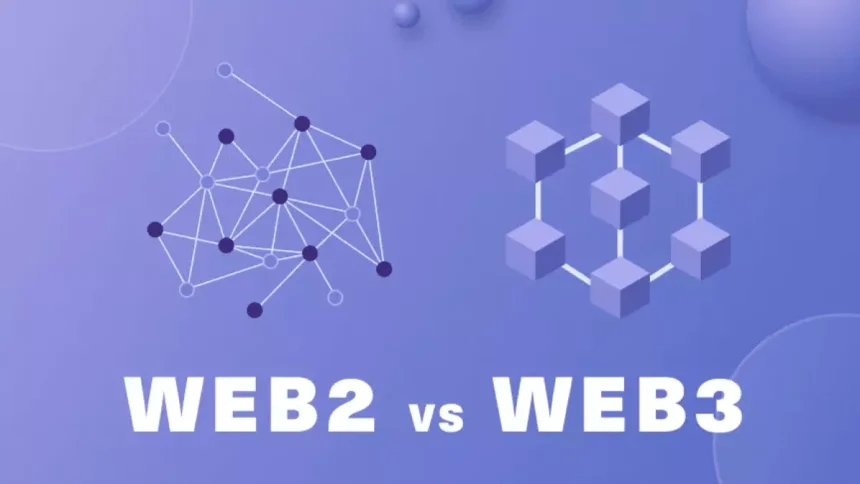If you’re reading this, you probably started your day by scrolling through a social media feed. Whether it was Instagram, X, Facebook, or TikTok, we live our digital lives on these platforms. They all seem to work the same way: you post, you scroll, you like, you share.
But beneath this familiar surface, a revolutionary change is taking place.
A new wave of Decentralized Social (DeSo) platforms, often called Web3 social, is challenging the very foundation of how we connect online. While a DeSo app might look like its Web2 cousin, the underlying plumbing is radically different.
Understanding these differences is key to understanding the future of the internet. So, let’s break down the five biggest ways DeSo is rewriting the rules of social media.
Difference #1: Data & Content Ownership
The Old Way (Web2): You’re Renting Your Digital Space. On platforms like Facebook or Instagram, any content you upload—your photos, videos, and posts—is stored on their private servers. According to their terms of service, you grant them a license to use, distribute, and monetize this content. They can remove it at any time, and if they shut down, your data disappears with them. You’re essentially a tenant on their property.
The New Way (DeSo): You Own Your Digital House. On DeSo platforms (like Farcaster, Lens, or DeSo blockchain apps), your data is stored on a public, decentralized blockchain. Your content is linked directly to your cryptographic wallet, giving you true ownership. No single company can delete it. It’s your digital property, just like owning the title to your home. You decide what to do with it.
Difference #2: Identity & Portability
The Old Way (Web2): The Walled Garden. Your identity is trapped. The thousands of followers you spent years building on X are useless on TikTok. Your professional network on LinkedIn is separate from your creative community on Instagram. Each platform is a “walled garden,” locking you and your social graph in to maintain their dominance. Leaving means starting from scratch.
The New Way (DeSo): Your Passport for the Internet. DeSo separates the application from the data. Your profile, content, and followers constitute your “social graph,” which you own. Because it’s on an open blockchain, you can take it with you. You can use one DeSo app today and switch to a different, better one tomorrow, and all your followers and posts will be there waiting for you. It’s like being able to switch from Gmail to Outlook without losing a single contact or email.
Difference #3: Monetization
The Old Way (Web2): You Are the Product. The business model of Web2 social is advertising. Platforms track your every click to build a profile on you, which they then sell to advertisers. Creators get a tiny, often unpredictable fraction of this revenue. The system is designed to capture your attention for the benefit of the platform and its advertisers, not for you or the creators you follow.
The New Way (DeSo): The Creator Economy. DeSo flips the model on its head. Monetization is direct from fans to creators. This happens through innovative tools built into the protocol itself, such as:
- Creator Coins: Buying a “stock” in your favourite creator.
- Direct Tipping: Sending money with a “like” or a comment.
- NFTs: Selling posts, art, or tickets as unique digital assets. The platform acts as a facilitator, not a gatekeeper, allowing creators to build a sustainable career directly from their community.
Difference #4: Censorship & Moderation
The Old Way (Web2): The Centralized Judge. A single, often unaccountable team at a corporation decides what is acceptable speech. Content moderation rules can be opaque, inconsistently applied, and subject to corporate or political pressure. If you’re banned, there is often no meaningful appeal process.
The New Way (DeSo): A Marketplace of Rules. This is a nuanced but crucial point. The underlying data on the blockchain is censorship-resistant—no one can delete it from the public record. However, this doesn’t mean it’s a lawless free-for-all. Instead, the applications (the “clients” you use to view the blockchain) can create their own moderation layers. This creates competition. If you don’t like the moderation policy of one app, you can switch to another that better aligns with your values, all while accessing the same underlying data. You choose your filter.
Difference #5: Governance & Innovation
The Old Way (Web2): The Dictatorship. The platform’s parent company has total control over its future. They decide which features to build and which to kill. Access for third-party developers is limited and can be revoked at any time, stifling innovation (just ask anyone who built a third-party Twitter client in the old days).
The New Way (DeSo): The Public Bazaar. DeSo protocols are open and permissionless, like a public bazaar. Anyone in the world can build a new app, feature, or algorithm on top of the shared data layer. This leads to an explosion of creativity and competition. If the main app becomes stale, a new, more innovative one can quickly emerge and serve the same users. It’s a dynamic ecosystem built by many, not a rigid structure controlled by one.
Summary: At a Glance
| Feature | Web2 Social Media (The Old Way) | DeSo / Web3 Social (The New Way) |
| Ownership | The platform owns your data. | You own your data via your wallet. |
| Identity | Trapped in “walled gardens.” | Portable across different apps. |
| Monetization | Advertising-based; you’re the product. | Direct creator-to-fan economy. |
| Censorship | Centralized, opaque moderation. | Data is censorship-resistant; you choose your app/filter. |
| Innovation | Closed, permissioned development. | Open, permissionless development. |
Export to Sheets
Final Thoughts
The shift from Web2 social to DeSo is more than just a new trend; it’s a fundamental change in the power dynamics of the internet. It’s a move away from renting our digital lives from corporate landlords and towards building and owning our own digital communities.
Web2 platforms aren’t going away tomorrow, but the choice is no longer just between them. We now have a viable alternative that prioritizes user ownership, creator freedom, and open innovation.
Which of these differences do you think is the most important? Let me know in the comments below!





